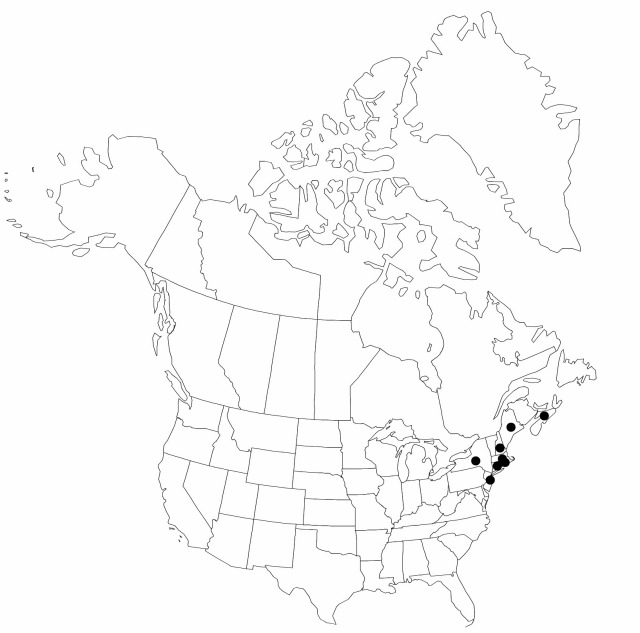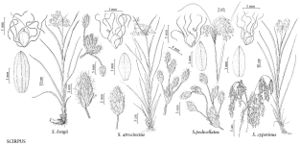Difference between revisions of "Scirpus longii"
Rhodora 13: 6. 1911.
FNA>Volume Importer |
FNA>Volume Importer |
||
| Line 33: | Line 33: | ||
-->{{#Taxon: | -->{{#Taxon: | ||
name=Scirpus longii | name=Scirpus longii | ||
| − | |||
|authority=Fernald | |authority=Fernald | ||
|rank=species | |rank=species | ||
| Line 48: | Line 47: | ||
|publication year=1911 | |publication year=1911 | ||
|special status= | |special status= | ||
| − | |source xml=https://jpend@bitbucket.org/aafc-mbb/fna-data-curation.git/src/ | + | |source xml=https://jpend@bitbucket.org/aafc-mbb/fna-data-curation.git/src/f50eec43f223ca0e34566be0b046453a0960e173/coarse_grained_fna_xml/V23/V23_17.xml |
|genus=Scirpus | |genus=Scirpus | ||
|species=Scirpus longii | |species=Scirpus longii | ||
Revision as of 21:05, 16 December 2019
Plants spreading ± evenly over substrate; rhizomes thick, elongate rhizomes. Culms: fertile ones upright or nearly so; nodes without axillary bulblets. Leaves 4–7 per culm; sheaths of proximal leaves green or brownish; proximal blades and sheaths with septa few to many, conspicuous or inconspicuous; blades 30–54 cm × 5–9 mm. Inflorescences terminal; rays ascending or sometimes spreading, scabrous throughout or main branches smooth proximally, rays rarely with axillary bulblets; bases of involucral bracts black, glutinous. Spikelets in open cymes, central spikelet of each cyme sessile, others usually pedicellate, spikelets ovoid or ellipsoid to cylindric, 3.5–10.5 × 2–3(–5) mm; scales blackish, at least distally, with pale midribs, elliptic or narrowly elliptic to obovate or narrowly obovate, 2–3.1 mm, apex rounded to obtuse or minutely apiculate, apiculus (if present) less than 0.05 mm. Flowers: perianth bristles persistent, 6, slender, contorted, much longer than achene, smooth, projecting beyond scales, mature inflorescence appearing woolly; styles 3-fid. Achenes reddish brown, elliptic or obovate in outline, plano-convex or plumply trigonous, 0.7–1 × 0.4–0.5 mm. 2n = 66, 68.
Phenology: Fruiting early summer (Jun).
Habitat: Marshes
Elevation: 0–200 m
Distribution

N.S., Conn., Maine, Mass., N.H., N.J., N.Y., R.I.
Discussion
Although large populations of Scirpus longii exist, collections are rarely made because flowering culms usually are not present and only vegetative portions of the plant can be collected. Fire and other disturbances enhance culm formation. The report from North Carolina (M. L. Fernald 1943d) was based on a misidentified specimen. Historic populations known from Connecticut (South Windsor, Hartford County) and New York (The Aqueduct, Long Island) are believed to have been extirpated.
Scirpus longii rarely hybridizes with S. cyperinus.
Selected References
None.
